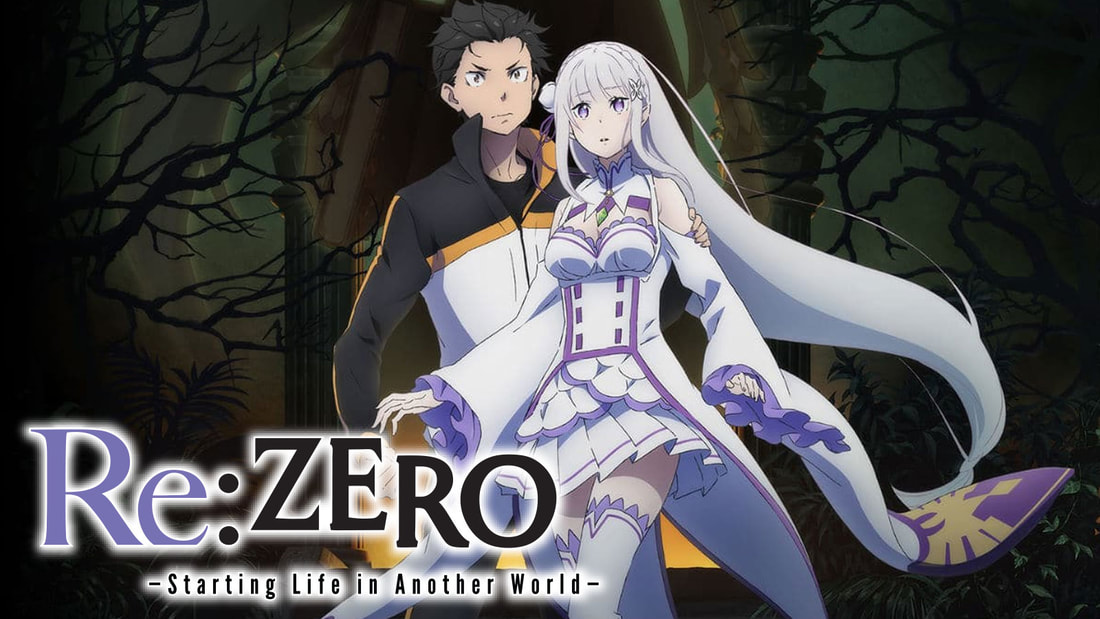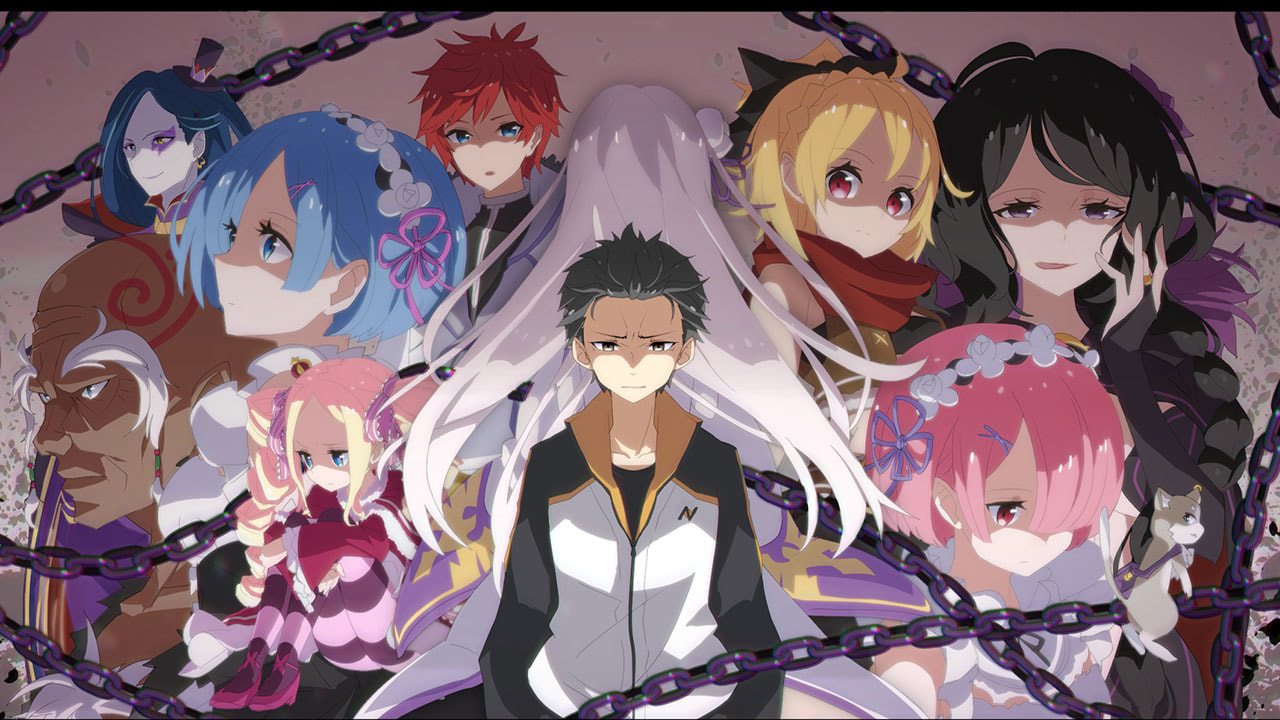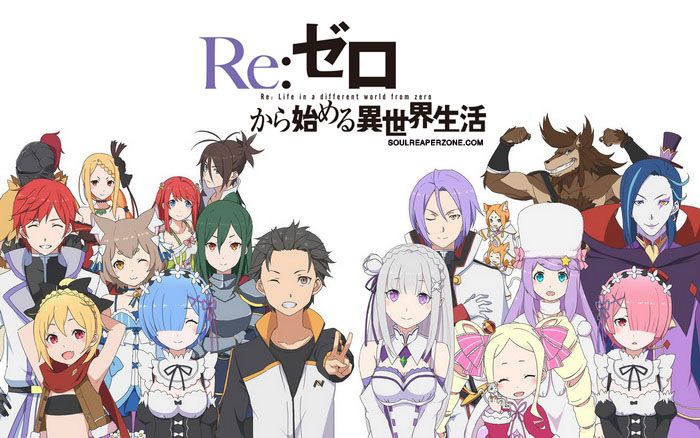In almost every video game, the player is able to experience the world created by the developers through the eyes of an invincible character. Although the player’s character might die in the game, the player always has a second chance since the character can always respawn. In other words, the death the character experiences is temporary. Because of this, the player has the freedom to do whatever they want, since the only repercussion they have to experience is a temporary death.
Re:Zero - Starting Life in Another World (Re:ゼロから始める異世界生活), directed by Masaharu Watanabe in 2016, is an Japanese animation series that brings to life a character that must live life as if he was living it in a fighting video game, where each death just results in a resurrection at a “save point”.
Although Re:Zero was released a couple years ago, a second season has just been released in the summer of 2020. Since the original series was so successful, there was a lot of excitement and anticipation for the new season. However, because of the time gap of four years in between the release of the first and second season, many viewers have been returning to the first season of Re:Zero as a refresher before venturing into the second season.
Re:Zero follows the life of Natsuki Subaru (voiced by Yuusuke Kobayashi), an ordinary human who has been swept away from his ordinary life into a fantasy world. Almost every being in that world has some sort of magic or fighting ability, but Subaru quickly learns that he does not have one. Low-level thugs immediately pick on him, since he is physically and magically weak compared to the other , but he ends up being saved by a mysterious white-haired girl (voiced by Rie Takahashi) who calls herself “Satella”. In return for saving him, Subaru agrees to help Satella, but they eventually get cornered in the slums. Subaru is powerless as both of them are brutally murdered.
A couple seconds later, Subaru reawakens, and the exact events that had happened to him previously are happening again. After following a similar path and getting murdered again, he begins to realize that every time he dies, he gets brought back to where he began.
As the story progresses, it becomes evident that only Subaru can remember events that happen in previous timelines where he has died. Information about the environment becomes his only weapon. Although he is physically weak, he can fight to survive by making decisions, so the difference between video games and Subaru’s situation becomes apparent as he continues to die and resurrect. It begins to take a heavy toll on Subaru’s mental health, and at some points in the story, it seems like his only fate is to die repeatedly with no way out.
Although Subaru lives in a fantasy world, the plot tackles themes of reality by showing Subaru’s human emotions as he goes through trials of death and despair. In video games, the main character does not usually suffer upon death, but since Subaru remembers his deaths, he is forced to endure the pain. The series is successful in displaying the humanity of Subaru through his emotional trauma.
Many story-based video games have the problem of being tedious and repetitive. This is because a player might have to keep repeating a part of the storyline if they keep dying or making the wrong decision. However, Re:Zero manages to avoid monotonous storylines and at the same time make each of Subaru’s “attempts” necessary for the plot to continue. Parts in the story that have already been experienced by the viewers are often either skipped or completely changed. Duplicate or identical scenes almost never happen, allowing the story to always be evolving in a new and interesting way. These evolutions allow the plot to contain numerous twists and turns, keeping the audience on their toes.
Another reason Re:Zero is able to avoid predictability is because the characters are so versatile. Just because a character does something in one timeline does not necessarily mean they will do the same thing in another timeline. If Subaru knows the future and acts differently, supporting characters could suddenly become opposing characters. For example, in the first timeline, Subaru and Satella immediately become friends. However, after Subaru is killed, he finds Satella and starts to act as if he knows her. Never having met Subaru, she suddenly becomes enraged and warns Subaru not to call her by that name. Just because she helped him in one timeline, because of the way he acted with the new information, she refuses to help him in the new timeline.
The series as a whole has a colorful, crisp feel. The bright colors during comedic moments of the fantasy world allow those scenes to shine, but when the dark and terrifying moments happen, all of the happy saturation disappears. The contrast between the different tones of the series is accentuated through the art. Each character in the series has a distinct design. They are easily recognizable, and like most anime, each of them has a distinct hair color and clothing style. The main protagonist has black hair, while the main supporting characters have hair colors ranging from red, blue, and all the way to white.
Re:Zero at its core is a video game in the form of animation. Although, like most video games, it may seem like a fun, happy story, it may surprise audiences by tackling darker themes such as suffering and the mental strain the main character has to endure. Themes of human weakness become very apparent even in a fantasy setting. Anyone who appreciates a great story, filled with multi-faceted characters and unpredictable events, would definitely enjoy watching the series. For a storyline about living the same parts of life over and over, Re:Zero is anything but repetitive.




 RSS Feed
RSS Feed
